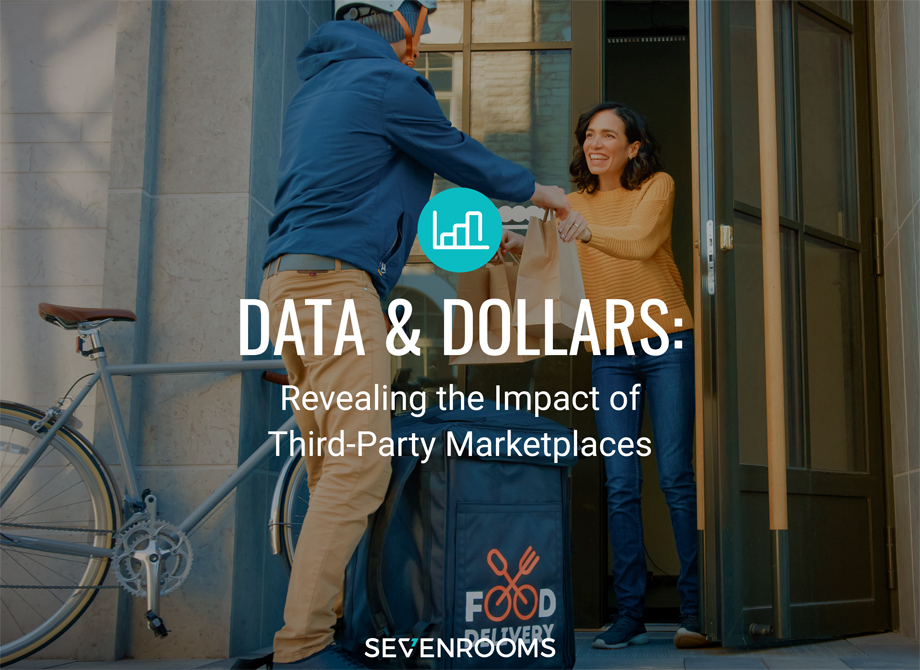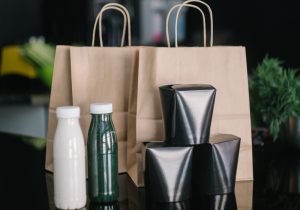American restaurants are facing a threat from the very technology that they have turned to for support this past year. At a time when every penny of revenue is crucial, operators could save upwards of tens of thousands of dollars a month on third-party delivery commissions by turning on direct channels.
And this is not even counting the opportunity costs from losing guest data and the marketing opportunities that go with it. But are consumers aware of the impact of third-party delivery platforms on restaurants? And how are they motivated to support their favorite restaurants throughout this time?
SevenRooms, a data-driven guest experience platform for the hospitality industry, divulges these findings in its “Data & Dollars: Revealing the Impact of Third-Party Marketplaces” report.

With third-party delivery platforms like UberEats, Grubhub and Postmates costing restaurants significant dollars in commissions and fees, nearly 20 percent (16%) of Americans believe that third-party platforms do more harm than good for restaurants. As consumers have become more aware of the obstacles restaurants face in their day-to-day operations, going direct creates opportunities and benefits for operators to align with the changed diner expectations uncovered in this report.
The study was commissioned through independent third-party research firm YouGov, with additional data from various resources(1) relating to the average cost of rent, PPE, hourly pay, third-party commission rates and more.
The Real Costs of Third Parties
SevenRooms compared the amount of money that could be saved by shifting a percentage of online orders to a direct ordering solution to offset the real costs associated with operating a restaurant, revealing the following:
Consider a high-end Italian restaurant in New York (think: Luca, Bar Primi, or Marea). In this example, the restaurant fulfills an estimated 1,500 combined delivery and take-out orders at an average cost of $144 per order over a six-month period. With 75% of their business as delivery (at 30% commission) and 25% of their business as pickup (at 10% commission), a direct ordering solution would save the restaurant approximately $54,000 over the course of that six-month period.
 That $9,000 dollars a month saved by utilizing a direct ordering solution could be put towards more worthwhile causes and tools to keep their doors open, including:
That $9,000 dollars a month saved by utilizing a direct ordering solution could be put towards more worthwhile causes and tools to keep their doors open, including:
- Nearly an entire month of rent (NYC rent averages between $10K and $30K a month)
- 904 hours of pay for waiters (at $9.95/hour in NY)
- 6 igloos for outdoor dining or 27 propane heaters or 183 tanks of propane to keep guests warm
- 69 boxes of gloves or 300 boxes of masks or 333 gallons of hand sanitizer
For a high-end steakhouse/American restaurant in Los Angeles (think: Del Frisco’s or Morton’s) that, in this scenario, fulfills an estimated 1,500 combined delivery and take-out orders over six months with an average order cost of $167. If 75% of their business is delivery (at 30% commission) and 25% of their business is pickup (at 10% commission), the restaurant would save approximately $63,000 over the course of six months if it utilized a direct ordering solution.
Instead, that $10,500 dollars a month could pay for:
- Nearly two months of rent in LA (LA rent averages between $6K and $15K)
- Over 41,000 takeout containers
- 875 hours of pay for waiters (at $12/hour)
Lastly, for a high-volume casual restaurant in California (think: Urth Caffe or Coral Tree Cafe). In this scenario, the restaurant is fulfilling 19,000 combined delivery and take-out orders over a six-month period. Assuming their average order is $33, and that 75% of their business is delivery (at 30% commission) and 25% of their business is pickup (at 10% commission), the restaurant would save approximately $154,000 if it used a direct ordering solution over the course of that six months.
If the restaurant utilized a direct ordering solution, savings of $25,600 dollars a month could be put towards:
- 2,150 hours of pay for waiters (at $12/hour)
- Over 101,000 takeout containers
- 198 boxes of gloves or 860 boxes of masks or 1,172 gallons of hand sanitizer
Both consumers and restaurant operators have relied on third-party delivery platforms since the onset of the pandemic. However, over the past few months, the true costs of third-party platforms and benefits of utilizing a direct ordering solution have come to light, and it’s imperative that the conversation move forward to help restaurants stay in business for the long-term.
Americans Demand Change
Consumers are catching on to the downsides of third-party platforms. Of Americans who say they’re motivated to order directly from a restaurant instead of a third-party delivery platform, nearly 3 in 10 (28%) say it’s because they’ve seen their favorite restaurants struggle and want to help out others as much as possible. While 30 percent say it’s because they know that third-party delivery platforms charge too much in fees from restaurants.
Americans know that third-parties stand in the way of restaurant recovery, and, while 4 in 10 Americans (37%) say they want to do all they can to directly support restaurants, they know more is needed. Nearly half of Americans (47%) want to see increased and/or additional aid for restaurants from the federal government, while 43 percent want to see increased and/or additional aid from local and state governments.
Personalization Promotes Loyalty
This past year has shown us that the restaurant industry is incredibly resilient. Restaurants across the country have adapted, creating offerings and incentives including to-go cocktails, in-home experiences, and tailored customer promotions that have increased customer loyalty tenfold. So much so that, of Americans planning to order from a restaurant for delivery or takeout, more than 1 in 3 (36%) say they would be incentivized to order directly versus from a third-party delivery platform if they were offered a personalized promotion for their meal (i.e., discount code, complimentary drink or appetizer).
Other top incentives include:
- A restaurant’s own app for ordering, tracking, communications, etc. – 41%
- A personalized promotion for a subsequent delivery order or visit – 32%
- A menu and experience that was personalized for them based on previous orders – 17%
“As the hospitality industry reels from the pandemic’s harsh economic effects, it’s imperative that we come together to advocate for an industry in need of our support,” said Joel Montaniel, CEO & Co-Founder at SevenRooms. “Restaurants singularly relying on third party delivery platforms as their sole source of revenue are putting themselves in a very challenging situation. Operators are struggling to cover the most basic costs for their businesses and are faced daily with the very real possibility of having to close their doors. Without technological, financial and governmental solutions that enable them to thrive, and the actions of customers themselves, the restaurants and culture that are at the core of our cities and communities are very likely to fade away.”
Research Methodology
SevenRooms commissioned YouGov PLC – a third party, professional research and consulting organization – to poll the views of 1,229 individuals who agreed to take part. Fieldwork was undertaken online between January 28 – 29, 2021. The figures have been weighted and are representative of all US adults (aged 18+).
SevenRooms provided data in regard to commissions, fees, and estimated customer savings over a period of six months, taking into account both delivery and pick-up rates.
SevenRooms conducted research in February 2021 to compile data from various resources published in recent years related to the average cost of rent, PPE, hourly pay, and more across the country. All of the information provided in this report was collected from reputable internet sources and restaurant vendors. The topics of these studies ranged from average restaurant expenses to third-party rates and fees.








